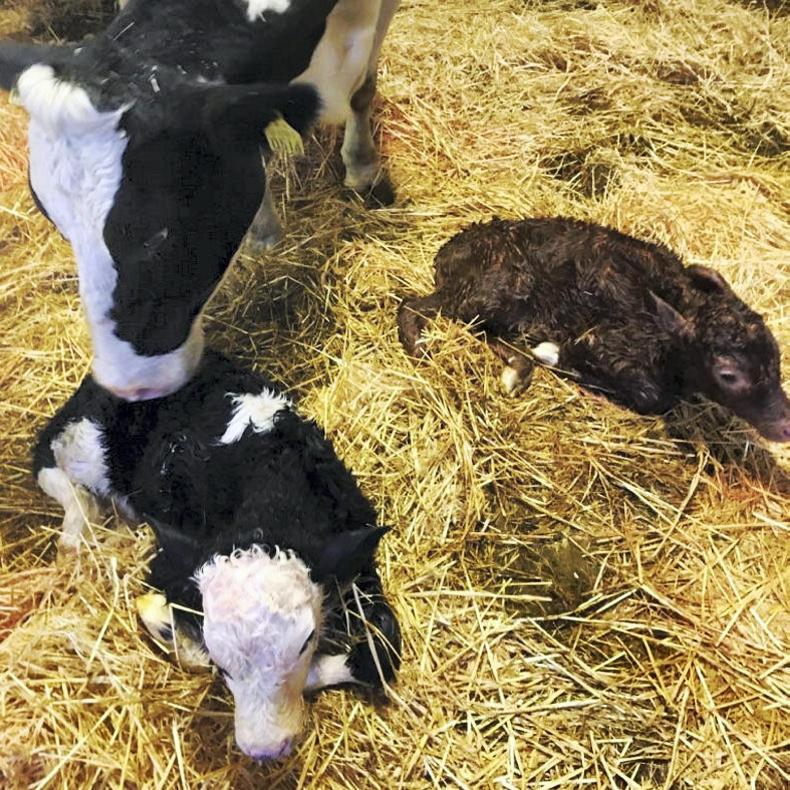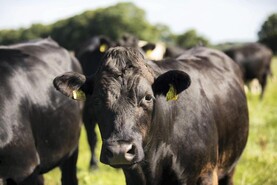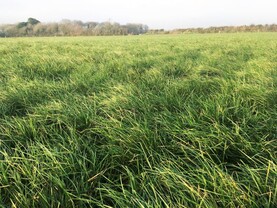Clare farmer Seán Culligan received an unusual surprise in the calving shed at 7am on Wednesday 19 February when one of his dairy cows, a Holstein Friesian had calved down a set of twins, however they were two different breeds. The cow had one Hereford bull calf and one female Limousin.
“I usually use AI for the first third of the herd, for replacements. After that, I have two beef bulls I have a Hereford and a Limousin bull. I alternate them between them.
“I’d leave one of them with the cows by day and let the other one out by night,” he said.

The cow had one Hereford bull calf and one female Limousin.
Different
Culligan explained that the calves were born backwards and he couldn’t tell their breeds at first.
“I was surprised that the second one had brown legs, because the first one had black legs.
“Sometimes you could have a brown Hereford, but as they weren’t presenting right, it’ wasn’t until they were fully born that I realised that it had no white at all, it was just a brown Limousin.”
The farmer was really surprised at the sight and hadn’t realised that the chances of twins being sired by two different bulls is just 1%.
Rare
“They’re like chalk and cheese to look at them,” he said. “I’ll be holding on to them until they’re about two years old and we’ll see then.”
The phenomenon is called heteropaternal superfecundation (HS). As previously reported in the Irish Farmers Journal a 2017 scientific paper published by ICBF scientists revealed how many twin calves have different fathers.
Matthew McClure, Jennifer McClure and John McCarthy studied how often twins can be sired by different bulls and found that on average 2.14m cattle are born in Ireland every year with 36,600 sets of twins, which equates to 1.7% of all calves born.
They also found that found that around 1% of all twins were HS twins with two different sires, while the rate of identical twin calves is 5%.
Read more
Prices fall at Global Dairy Trade auction
Monday management: getting colostrum into calves
Clare farmer Seán Culligan received an unusual surprise in the calving shed at 7am on Wednesday 19 February when one of his dairy cows, a Holstein Friesian had calved down a set of twins, however they were two different breeds. The cow had one Hereford bull calf and one female Limousin.
“I usually use AI for the first third of the herd, for replacements. After that, I have two beef bulls I have a Hereford and a Limousin bull. I alternate them between them.
“I’d leave one of them with the cows by day and let the other one out by night,” he said.

The cow had one Hereford bull calf and one female Limousin.
Different
Culligan explained that the calves were born backwards and he couldn’t tell their breeds at first.
“I was surprised that the second one had brown legs, because the first one had black legs.
“Sometimes you could have a brown Hereford, but as they weren’t presenting right, it’ wasn’t until they were fully born that I realised that it had no white at all, it was just a brown Limousin.”
The farmer was really surprised at the sight and hadn’t realised that the chances of twins being sired by two different bulls is just 1%.
Rare
“They’re like chalk and cheese to look at them,” he said. “I’ll be holding on to them until they’re about two years old and we’ll see then.”
The phenomenon is called heteropaternal superfecundation (HS). As previously reported in the Irish Farmers Journal a 2017 scientific paper published by ICBF scientists revealed how many twin calves have different fathers.
Matthew McClure, Jennifer McClure and John McCarthy studied how often twins can be sired by different bulls and found that on average 2.14m cattle are born in Ireland every year with 36,600 sets of twins, which equates to 1.7% of all calves born.
They also found that found that around 1% of all twins were HS twins with two different sires, while the rate of identical twin calves is 5%.
Read more
Prices fall at Global Dairy Trade auction
Monday management: getting colostrum into calves







 This is a subscriber-only article
This is a subscriber-only article










SHARING OPTIONS: